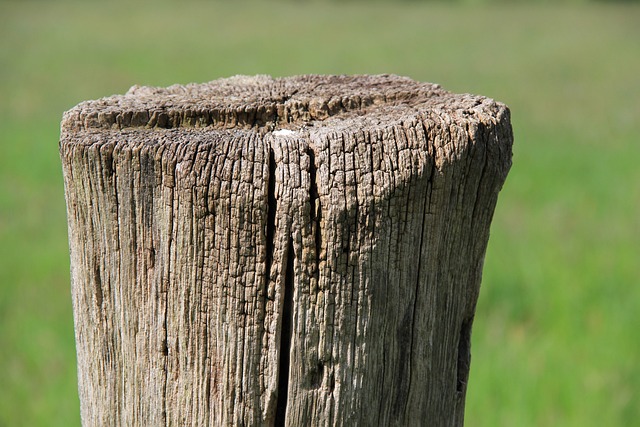In coastal regions, where harsh weather conditions and salty air pose unique challenges, durable wooden fencing is an attractive and sustainable solution. This article explores the various aspects of selecting and maintaining this type of fencing to protect properties while enhancing their beauty. From understanding the specific challenges of coastal environments to choosing the ideal wood species and installation techniques, we provide comprehensive guidance for homeowners seeking a long-lasting and aesthetically pleasing barrier.
- Understanding Coastal Fencing Challenges
- Advantages of Durable Wooden Fencing
- Choosing the Right Wood Species
- Installation Considerations for Coastlines
- Maintenance Tips for Longevity
- Environmental Benefits and Aesthetics
Understanding Coastal Fencing Challenges
Coastal areas present unique challenges when it comes to fencing due to their harsh, often unpredictable environments. Strong winds, salty air, and frequent rainfall can take a toll on traditional fencing materials. These conditions require special consideration for any fencing solution to ensure longevity and minimal maintenance. One of the primary concerns is corrosion and rot, as salt water can accelerate wood decay.
Additionally, coastal fences must withstand powerful storms and high waves, which can cause significant damage or even wash away weaker structures. The challenge lies in selecting a material that not only withstands these elements but also blends aesthetically with the coastal landscape. Durable wooden fencing offers a practical and visually appealing solution by utilizing treated wood species that are resistant to rot and corrosion, ensuring a robust and long-lasting barrier.
Advantages of Durable Wooden Fencing
Durable wooden fencing offers several advantages for coastal areas, where traditional materials might struggle to withstand harsh weather conditions and salty environments. First, wood is a naturally attractive material that can enhance the aesthetic appeal of any property. Its warmth and versatility allow it to complement various architectural styles, from rustic to modern.
Moreover, properly treated and maintained wooden fences are highly durable and resistant to rot, fungi, and insects common in coastal regions. This longevity translates into reduced maintenance costs over time compared to other fencing materials. Wooden fences also provide excellent privacy and security while allowing for natural ventilation, which can be a significant advantage in humid coastal climates.
Choosing the Right Wood Species
When selecting wood for coastal fencing, choosing the right species is paramount. Softwoods like cedar and redwood are popular choices due to their natural resistance to rot and insects, making them ideal for harsh coastal environments. These woods also have a beautiful, naturally occurring resilience that enhances curb appeal over time.
However, it’s crucial to consider the specific conditions where the fence will be installed. Some species, like treated pine, offer excellent value and durability but may require more maintenance than cedar or redwood. Understanding the unique characteristics of each wood type ensures you make an informed decision, leading to a longer-lasting and low-maintenance coastal fencing solution.
Installation Considerations for Coastlines
When installing wooden fencing in coastal areas, several unique considerations come into play. First and foremost, the choice of wood is crucial; durable, weather-resistant species like cedar or treated timber are ideal to withstand constant exposure to salt water and strong winds. Proper drainage is another key factor; ensure the fence is installed with a slight slope to allow for efficient water runoff, preventing moisture buildup that could lead to rot.
Additionally, coastal environments often present challenges related to accessibility and aesthetics. In remote or rocky areas, traditional digging for post placement might be impractical, requiring innovative solutions like pile driving or anchored systems. Meanwhile, keeping the fence in harmony with the natural landscape is essential; consider low-profile designs that blend seamlessly with the surroundings, enhancing the overall coastal beauty rather than detracting from it.
Maintenance Tips for Longevity
To ensure your wooden fence lasts for years to come, regular maintenance is key. Start by cleaning the fence at least twice a year, removing any dirt, salt, or debris that could damage the wood. Use a soft brush and mild detergent; avoid harsh chemicals that might strip the finish. After cleaning, apply a fresh coat of water-repellent sealer or stain to protect against moisture and UV rays. This simple step can significantly extend the life of your fence.
Additionally, keep an eye out for loose nails or screws and tighten them as needed. Inspect for any signs of rot, cracks, or damage, addressing these issues promptly with repairs or replacement boards. Regular trimming of nearby trees and shrubs will also prevent branches from rubbing against the fence, causing wear and tear. With a little care and attention, your durable wooden fence can withstand the coastal elements.
Environmental Benefits and Aesthetics
Durable wooden fencing offers more than just security for coastal homes; it contributes to a beautiful, harmonious environment. The natural aesthetic of wood blends seamlessly with the surrounding landscape, creating a peaceful and inviting atmosphere. Unlike modern, industrial materials, wood has a timeless quality that enhances the curb appeal of any property.
Moreover, choosing durable wooden fencing supports local ecosystems. Wooden fences provide habitats for small animals and birds, fostering biodiversity right in your backyard. They also offer natural noise reduction, mitigating the constant hum of traffic or neighboring areas. This peaceful setting not only benefits residents but also attracts beneficial insects and pollinators, contributing to a healthier, more sustainable coastal environment.
